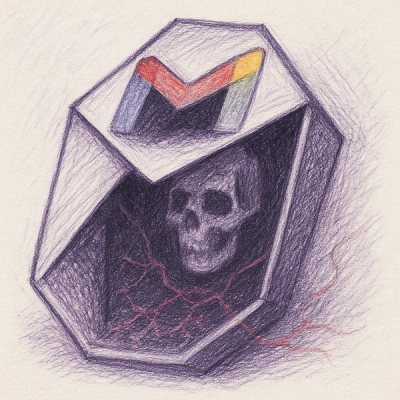
Research
NPM targeted by malware campaign mimicking familiar library names
Socket uncovered npm malware campaign mimicking popular Node.js libraries and packages from other ecosystems; packages steal data and execute remote code.
angular-three-gltf
Advanced tools
angular-three-gltfangular-three-gltf gives you a CLI to that turn GLTF assets into declarative and reusable Angular Three components.
This helps with performance optimization for asset-heavy Angular Three apps. It also allows you to modify your GLTF assets as Angular components, instead of working with 3D software like Blender.
angular-three-gltf fixes thatUsage
$ npx angular-three-gltf@latest [Model.glb] [options]
Options
--output, -o Output file name/path
--keepnames, -k Keep original names
--keepgroups, -K Keep (empty) groups, disable pruning
--meta, -m Include metadata (as userData)
--shadows, -s Let meshes cast and receive shadows
--printwidth, -w Prettier printWidth (default: 120)
--precision, -p Number of fractional digits (default: 2)
--draco, -d Draco binary path
--suspense -u Make the component suspense-ready
--root, -r Sets directory from which .gltf file is served
--transform, -T Transform the asset for the web (draco, prune, resize)
--resolution, -R Transform resolution for texture resizing (default: 1024)
--simplify, -S Transform simplification (default: false) (experimental!)
--weld Weld tolerance (default: 0.0001)
--ratio Simplifier ratio (default: 0.75)
--error Simplifier error threshold (default: 0.001)
--debug, -D Debug output
First you run your model through angular-three-gltf. npx allows you to use npm packages without installing them.
npx angular-three-gltf@latest model.gltf --transform
Add your model to your /public folder as you would normally do. With the --transform flag it has created a compressed copy of it (in the above case model-transformed.glb). Without the flag just copy the original model.
/public
model-transformed.glb
The component can now be dropped into your scene.
<script>
import { Canvas } from '@threlte/core'
import Model from './Model.svelte'
</script>
<Canvas>
<Model />
</Canvas>
You can re-use it, it will re-use geometries and materials out of the box:
<Model position={[0, 0, 0]} />
<Model position={[10, 0, -10]} />
Or make the model dynamic. Change its colors for example:
<T.Mesh geometry={$gltf.nodes.robot.geometry} material={$gltf.materials.metal} material.color="green" />
Or exchange materials:
<T.Mesh geometry={$gltf.nodes.robot.geometry}>
<T.MeshPhysicalMaterial color="hotpink" />
</T.Mesh>
Make contents conditional:
{#if condition}
<T.Mesh geometry={$gltf.nodes.robot.geometry} material={$gltf.materials.metal} />}
{/if}
You don't need to do anything if your models are draco compressed, since useGltf defaults to a draco CDN. By adding the --draco flag you can refer to local binaries which must reside in your /public folder.
With the --transform flag it creates a binary-packed, draco-compressed, texture-resized (1024x1024), webp compressed, deduped, instanced and pruned *.glb ready to be consumed on a web site. It uses glTF-Transform. This can reduce the size of an asset by 70%-90%.
It will not alter the original but create a copy and append [modelname]-transformed.glb.
Add the --types flag and your component will be typesafe.
<!--
Auto-generated by: https://github.com/pmndrs/gltfjsx
Command: npx gltfjsx@0.0.1 ./stacy.glb -t
-->
<script lang="ts">
import type * as THREE from 'three'
import { Group } from 'three'
import { T, type Props, type Events, type Slots } from '@threlte/core'
import { useGltf, useGltfAnimations } from '@threlte/extras'
type $$Props = Props<THREE.Group>
type $$Events = Events<THREE.Group>
type $$Slots = Slots<THREE.Group>
export const ref = new Group()
type ActionName = 'pockets' | 'rope' | 'swingdance' | 'jump' | 'react' | 'shrug' | 'wave' | 'golf' | 'idle'
type GLTFResult = {
nodes: {
stacy: THREE.SkinnedMesh
mixamorigHips: THREE.Bone
}
materials: {}
}
const gltf = useGltf<GLTFResult>('/stacy.glb')
export const { actions, mixer } = useGltfAnimations<ActionName>(gltf, ref)
</script>
{#if $gltf}
<T is={ref} {...$$restProps}>
<T.Group name="Scene">
<T.Group name="Stacy" rotation={[Math.PI / 2, 0, 0]} scale={0.01}>
<T is={$gltf.nodes.mixamorigHips} />
<T.SkinnedMesh
name="stacy"
geometry={$gltf.nodes.stacy.geometry}
material={$gltf.nodes.stacy.material}
skeleton={$gltf.nodes.stacy.skeleton}
rotation={[-Math.PI / 2, 0, 0]}
scale={100}
/>
</T.Group>
</T.Group>
<slot {ref} />
</T>
{/if}
If your GLTF contains animations it will add @threlte/extras's useGltfAnimations hook, which extracts all clips and prepares them as actions:
const gltf = useGltf('/stacy.glb')
export const { actions, mixer } = useGltfAnimations(gltf, ref)
If you want to play an animation you can do so at any time:
const onEvent = () => {
$actions.jump.play();
};
import { parse } from "@threlte/gltf";
import { GLTFLoader, DRACOLoader } from "three-stdlib";
const gltfLoader = new GLTFLoader();
const dracoloader = new DRACOLoader();
dracoloader.setDecoderPath("https://www.gstatic.com/draco/v1/decoders/");
gltfLoader.setDRACOLoader(dracoloader);
gltfLoader.load(url, (gltf) => {
const component = parse(filename, gltf, config);
});
The MIT License (MIT). Please see the License File for more information.
FAQs
GLTF to Angular Three converter
The npm package angular-three-gltf receives a total of 14 weekly downloads. As such, angular-three-gltf popularity was classified as not popular.
We found that angular-three-gltf demonstrated a healthy version release cadence and project activity because the last version was released less than a year ago. It has 0 open source maintainers collaborating on the project.
Did you know?

Socket for GitHub automatically highlights issues in each pull request and monitors the health of all your open source dependencies. Discover the contents of your packages and block harmful activity before you install or update your dependencies.

Research
Socket uncovered npm malware campaign mimicking popular Node.js libraries and packages from other ecosystems; packages steal data and execute remote code.

Research
Socket's research uncovers three dangerous Go modules that contain obfuscated disk-wiping malware, threatening complete data loss.

Research
Socket uncovers malicious packages on PyPI using Gmail's SMTP protocol for command and control (C2) to exfiltrate data and execute commands.